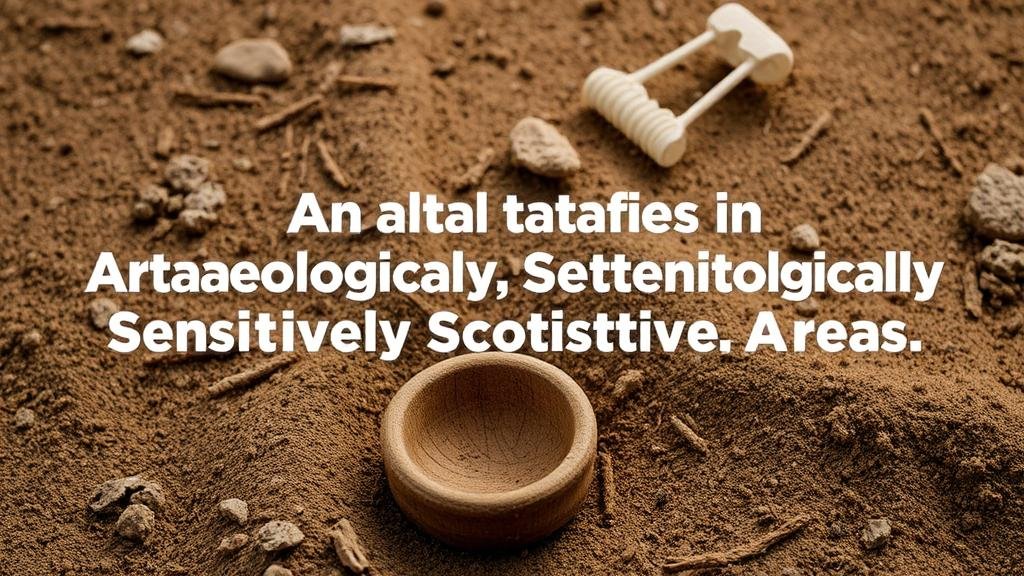How to Detect for Artifacts in Archaeologically Sensitive Areas
How to Detect for Artifacts in Archaeologically Sensitive Areas
Detecting artifacts in archaeologically sensitive areas is a crucial process that contributes to the understanding of past human activities. This article outlines the methodologies and techniques employed in artifact detection, highlighting the importance of preservation and the ethical considerations inherent in such practices.
Understanding Archaeologically Sensitive Areas
Archaeologically sensitive areas are defined as locations where significant evidence of past human activity is likely to remain undisturbed. These may include ancient habitation sites, burial grounds, and areas where historical events took place. Understanding the characteristics of these areas is essential for effective artifact detection.
Factors contributing to an areas archaeological sensitivity include:
- Topography: Elevated landforms and river valleys often yield significant artifacts.
- Soil Composition: Certain soil types preserve artifacts better than others, such as clay or peat.
- Historical Context: Locations mentioned in historical texts may indicate potential artifact richness.
Methods of Artifact Detection
Artifact detection in archaeologically sensitive areas employs various methods, which can broadly be categorized into non-invasive and invasive techniques. Each method has its pros and cons, and often multiple methods are used in conjunction to ensure the accuracy of results.
Non-Invasive Techniques
Non-invasive techniques help minimize disturbance to the site while still providing valuable data. Some of the most effective non-invasive methods include:
- Ground-Penetrating Radar (GPR): This technology uses radar pulses to image the subsurface. GPR has been successfully employed in sites throughout the world, such as the ancient city of Pompeii, where it revealed structural remnants without excavation.
- Magnetometry: This technique measures variations in the Earths magnetic field caused by subsurface archaeological materials. For example, magnetometry has effectively mapped large burial sites in North America.
- Surface Surveying: This method involves systematic searches of the surface in designated areas to identify artifacts. Surface surveys in the Great Plains have uncovered numerous stone tools, revealing insights into prehistoric cultures.
Invasive Techniques
Invasive techniques, such as excavation, provide concrete evidence but may disrupt the archeological context. Examples include:
- Test Pitting: Small exploratory pits dig into the ground at regular intervals to assess the presence of artifacts. This method was utilized in the excavation of the ancient site of Çatalhöyük in Turkey, which revealed complex settlement patterns.
- Stratigraphic Excavation: This detailed approach examines layers of soil to chronologically sequence findings. Stratigraphic methods have been thoroughly documented in the excavation of Pompeii, uncovering artifacts from different time periods.
Legal and Ethical Considerations
It is imperative to understand the legal frameworks governing archaeological work in sensitive areas. Many regions have specific legislation, such as the Archaeological Resources Protection Act (ARPA) in the United States, which aims to protect archaeological sites from looting and destruction.
Ethical considerations also play a significant role. Archaeologists are often guided by professional codes of conduct, such as those outlined by the Society for American Archaeology, emphasizing respect for archaeological contexts and collaboration with local communities.
Case Studies of Effective Artifact Detection
Several case studies illustrate the successful application of artifact detection methods in sensitive areas:
- The Sutton Hoo Ship Burial: The use of aerial photography, metal detection, and subsequent excavation revealed an intact early medieval ship burial in Suffolk, England, providing critical insights into Anglo-Saxon culture.
- Caracol, Belize: The introduction of LiDAR technology over the Mayan ruins of Caracol allowed researchers to reconstruct the city’s layout and understand its significance without intrusive excavation.
Best Practices for Detecting Artifacts
To ensure successful artifact detection, practitioners should adhere to the following best practices:
- Develop a Clear Research Question: This aids in focusing efforts on relevant areas.
- Use a Combination of Methods: Integrating various techniques enhances accuracy and reliability of findings.
- Engage with Local Communities: Building partnerships with local stakeholders fosters trust and can lead to valuable local insights regarding possible artifact locations.
By following these practices, archaeologists can maximize their ability to detect artifacts while maintaining the integrity of culturally significant sites.
Conclusion
Detecting artifacts in archaeologically sensitive areas is a nuanced process that requires an understanding of both the scientific methodologies and the ethical implications involved. By utilizing a combination of non-invasive and invasive techniques while respecting legal and ethical guidelines, researchers can contribute significantly to our understanding of human history. Future advancements in technology are likely to further enhance our ability to detect artifacts efficiently and responsibly.
Actionable Takeaway: For those interested in pursuing or supporting archaeological work, consider engaging with local archaeological societies to learn about upcoming fieldwork and contribute to preserving valuable historical contexts.



